Great thing about baking is that you learn something new with every bake.
This was a 100% Wholewheat boule milled from Red hard spring (I think) Wheat. The wheat was milled too fast too fine, and i found the hard way, that finest stone milling causes starch damage. The results were as this:
This is the Wheat i milled (Hard Red Winter?).Very hard, like durum. I suspect that this wheat is a damaged crop. Frost maybe?
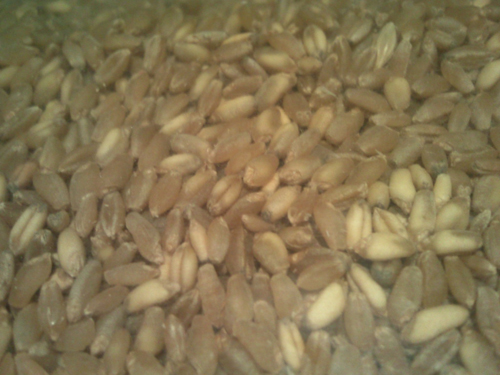
This is the pathetic Boule i spent 2 days preparing (No rise whatsoever), and baked under stainless steel bowl on a stone:
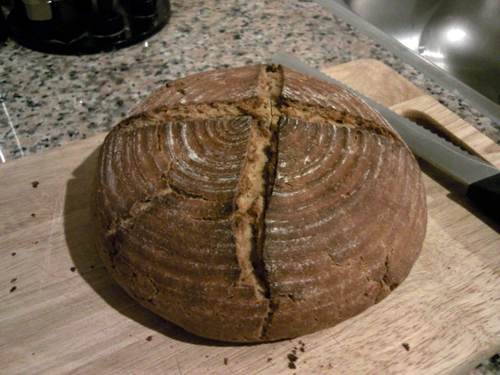
The so called crumb:
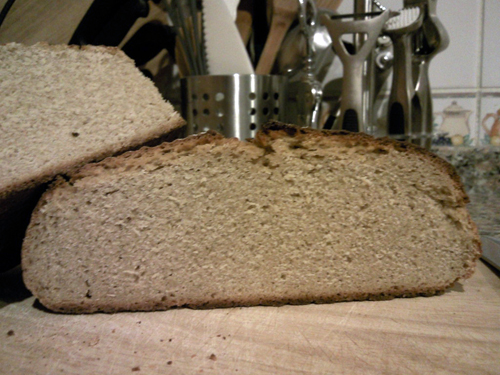
On another account, i have baked a successful (40% White WW, 30% Spelt, 30% AP)
(The Dough stuck a bit to the brotform because i pressed it in when i first put it):
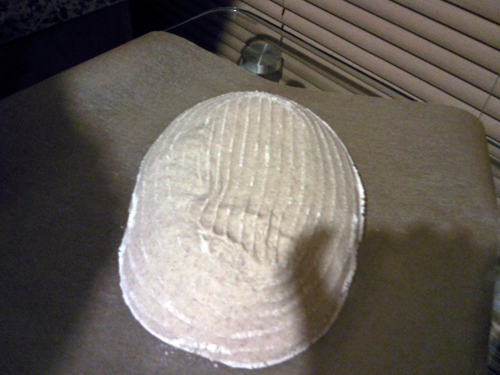
After scoring:
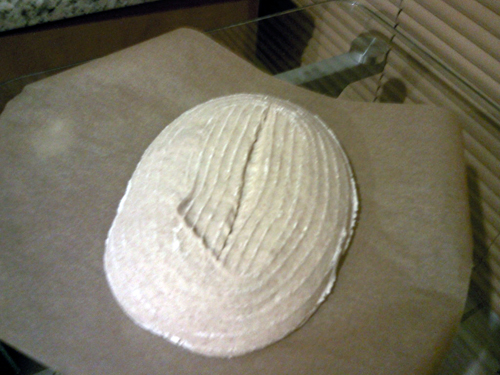
Baked under a stainless steel Bowl on a stone for 15 min. uncovered for 25 min:
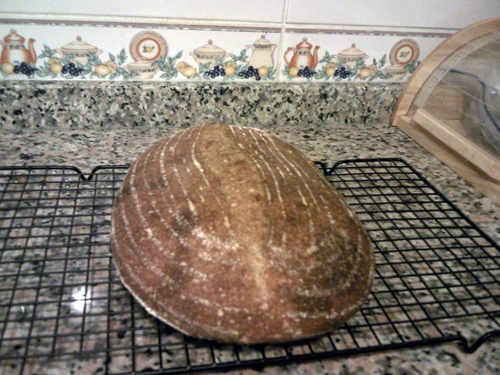
The crumb:
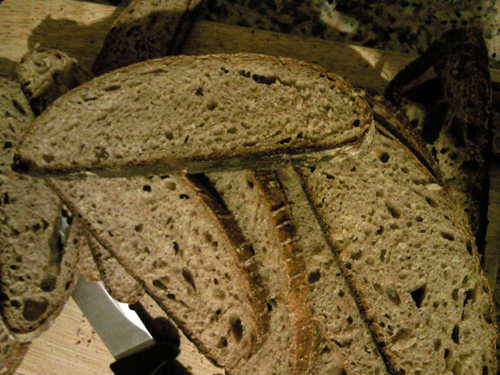
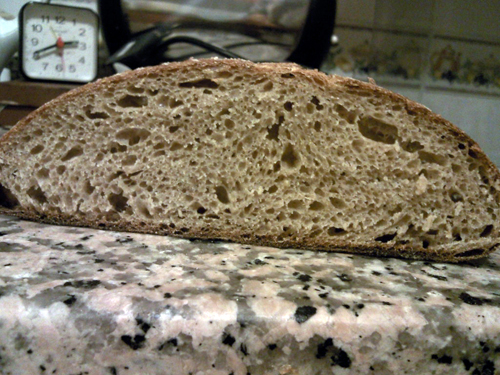
All I can say, it tasted Wonderfull, with soft creamy yet chewy crumb. I made a biga and a soaker for this. Then 24 hrs later, i combined both and did the (slap and fold french folding technique..hehe),followed by the fold in the bowl method i learned here. The overall dough hydration was 73%, and after the folding it was silky and smooth, with good gluten body.
- Mebake's Blog
- Log in or register to post comments
Mebake,
Your second loaf looks great. You got a nice rise and good color. I can't comment on your milling except to say, that's why I buy fresh milled flour from someone who does it every day. I think there is more to it than is generally known. You might be right that the grain might of been damaged but how would you know? By using a small percentage of that grain you should be able to use it a an enhancement to flavor and fiber.
Eric
Eric, Using the damaged starch flour will do more harm than good. It will adversely effect the fermentation (and overall dough development.) Damaged flour has a tendancy to absorb water like crazy,mine came out very warm out of the electric stone mill , and made the dough too sticky to knead.!! and i believe i know why the wheat has suffered frost. Its color suggest a harsh environment, and when milled, it was so tough , it heated up the stones so much and led to starch damage.
The second loaf is a clear example of milder, cooler milling results.
Thank you eric for the encouragement. you are fortunate to have fresh consistantly reliable flour at hand. In Dubai, you get 2 types of flour, stone milled high extraction (85%), or Wholemeal, both at 10.5% protein content. I prefer to mill harder grains to obtain stronger flours at the convinience of my home, but haven't been successful yet.
Mebake,
I am grinding my own flour and am trying to learn more about it. The grain looks odd. It would be good to hear from someone that knows what that is. How hot was the flour? Have you had good luck grinding other batches of grain? Do you temper the wheat before grinding?
Greg
Hi Greg, the grain does look odd, sort of a sick harvest. The Flour was like 60-70 Centigrade out of the mill. Hard, bad grain, plus vigorous milling to fine consistancy all lead to damaged starch flour that is virtually non-useable.
I milled other grains with high success, mainly White Whole Wheat. But i learned now never to mill to the finest consistancy very fast, gradually if i have to.
Mebake,
70C wow that is smok'n! That might be the problem. Do you temper your wheat? I am using HRS wheat and it is very hard before tempering. I am grinding by hand and tempering really helps.
Greg R
Greg, I don't temper my wheat. I hadn't had any flour heating problems before. Only with this particular Wheat. I Usually mill Whole White WHeat to 95% fineness and it comes out barely warm.